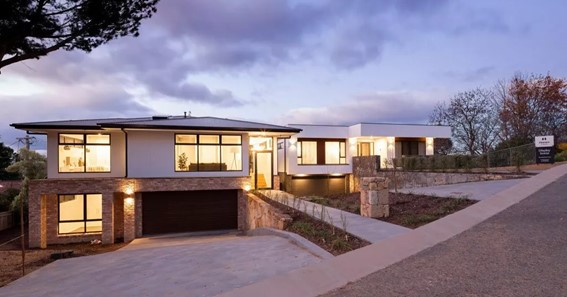Everyone wants a perfect home. Interestingly though, we mostly don’t give our drainage systems a second thought – that is, until water starts backing up into our basements. Then, all of a sudden, we have lots of questions. How does my wastewater system work? What’s the difference between a storm sewer and an infiltration system? Why does water always seem to pool in my yard after it rains?
Fortunately, Couvillion’s Landscapes | Landscaping New Orleans, LA, can create an effective drainage plan for your home. That aside, let’s put it more plainly: when constructing a home, few things are more critical than ensuring your house has a good drainage system – and it all starts with a plan. Without a proper drainage plan, your home is at risk for flooding, pooling water, and water damage. In short, a drainage plan helps you establish a system for directing water away from your home.
Installing a new drainage system can be costly, so it helps to have a plan before building your home. Let’s discuss some of the reasons you should have a drainage plan, including the different components of a typical system and how they work in concert to keep your home dry (and your basement free of sewage). By the end, you should better understand the relevance of such a plan, including how a drainage system works. Here we go.
The Essence of a Drainage Plan
As noted, a drainage plan can help prevent water damage to your home. Similarly, a well-designed drainage system can also:
- Prevent soil erosion around your home’s foundation
- Help protect your landscaping from being damaged by runoff water
- Reduce the amount of mold and mildew in and around your home
- Keep mosquito breeding areas to a minimum
Simply put, a good drainage plan is crucial to the safety and well-being of your home and family. Not convinced yet? Keep reading to learn more about the impact of your drainage system.
Click here – What Is 47 Inches In cm? Convert 47 In To cm (Centimeters)
How to Create a Drainage Plan
Creating a drainage plan is not as difficult as it may seem. Here are some tips to get you started:
- Contact your local municipality or county office. They should have records of the existing drainage systems in your area and can provide you with helpful information about local conditions that could impact your drains.
- Walk around your property and look for natural slopes or dips. These areas will be critical in determining where you need to direct runoff water away from your house.
- Look for low-lying areas where water might pool and create mosquito breeding grounds. If possible, try to direct runoff water away from these areas.
To create an effective drain system, consider working with an experienced contractor who understands local conditions and has extensive experience designing and installing drains.
Find out more about home designs by visiting Carlisle Homes
Trying to DIY your drain system could result in costly mistakes that could put your home at risk for flooding or other damage. Your contractor can help you create a plan that incorporates the various systems making up a drainage plan. Here’s a quick look at some of these systems:
- Wastewater System
The first line of defense against flooding is your home’s wastewater system. This system consists of two parts, as discussed below:
- Sanitary sewer – It carries away all the dirty water from your home (from toilets, sinks, showers, and washing machines). This water collects in a network of underground pipes and is eventually deposited at a wastewater treatment plant, where it is cleaned before being released back into the environment.
- Storm sewer – Responsible for carrying away rainwater or melted snow. This water also collects in an underground pipe network and is eventually discharged into a nearby stream, river, or lake. The storm sewer is typically separate from the sanitary sewer to prevent sewage backups during heavy rains or melting snow.
- Infiltration System
An infiltration system allows rainwater to seep back into the ground instead of running off into sewers or waterways. Such systems typically consist of perforated pipes buried underground.
The perforations allow water to seep from the pipe and back into the ground, where the soil naturally filters it before recharging aquifers or groundwater reserves. Some infiltration systems include vegetated swales – shallow depressions planted with grass or other plants – to help slow down and absorb runoff from hard surfaces like driveways and sidewalks.
Proper drainage is essential for any home – but it’s also surprisingly complex. As a result, a proper drainage plan should be front and center of your new home construction project. Without one, you’re at risk for a multitude of problems. Consider engaging a professional to craft a plan that ensures your drain system is up to par.
Click here – Can You Install an Above-Ground Pool in The Ground?






